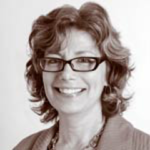Back in January, during PCMA’s Convening Leaders in Chicago, I met Amira El-Gawly, executive vice president and chief strategy officer of event-design company 360 Live Media. We got to chatting about 360 Live Media’s recent work with associations, which, she told me, included an initiative launched at OMED 2014, the American Osteopathic Association’s (AOA) annual convention. She paused, then asked, “Do you know what osteopathic medicine is?”
That question might have stumped me four years ago, but since then, I’ve learned a good deal about this particular branch of medicine. Next month, my older daughter, Megan, graduates from medical school as a doctor of osteopathic medicine (D.O.).
When Amira told me AOA recognized that osteopathic medicine suffers from a perception issue — either people don’t know the difference between a D.O. and an M.D., or they think that D.O.s aren’t “really” doctors — I got it. It took Megan a while to warm to the idea of becoming a D.O. rather than an M.D., and she eventually decided to attend the osteopathic medical school where she was accepted only because her friend’s father — an M.D. — convinced her. It made little difference, he said. In the end, you’ll be a physician.
So I was naturally drawn to the story of how AOA made OMED 2014 into a branding — and empowerment — experience for attendees. But as I learned more, I think I would have wanted to make this case study our cover and CMP Series story, even without my personal connection to osteopathy. While AOA has a unique identity challenge, its innovative approach at OMED addressed four out of six hot-button issues facing most medical meetings, as identified by a group of medical meeting planners for a Convening Leaders 2015 session: attendance, customized attendee experiences, competition, and extending learning.
Moreover, the appeal of Strengths-LIVE — the live-event initiative that AOA rolled out at OMED in partnership with 360 Live Media — extends far beyond medical meetings. It’s based on Gallup’s StrengthsFinder, a tool that has helped millions of people identify and build on their five top strengths in their work and at home.
During our first conversation, Amira drew a parallel between the meeting-professional community and osteopathic medicine in that they both share a lack of identity. True enough. While we’ve made strides in professionalizing the field, we’ve still got some perception issues, outside and often within our industry. A common complaint made by respondents to Convene’s Annual Meetings Market Survey, published last month, was that the strategic role meeting professionals play within their own organizations is not fully valued. Amira offers a first step toward remedying that situation.

